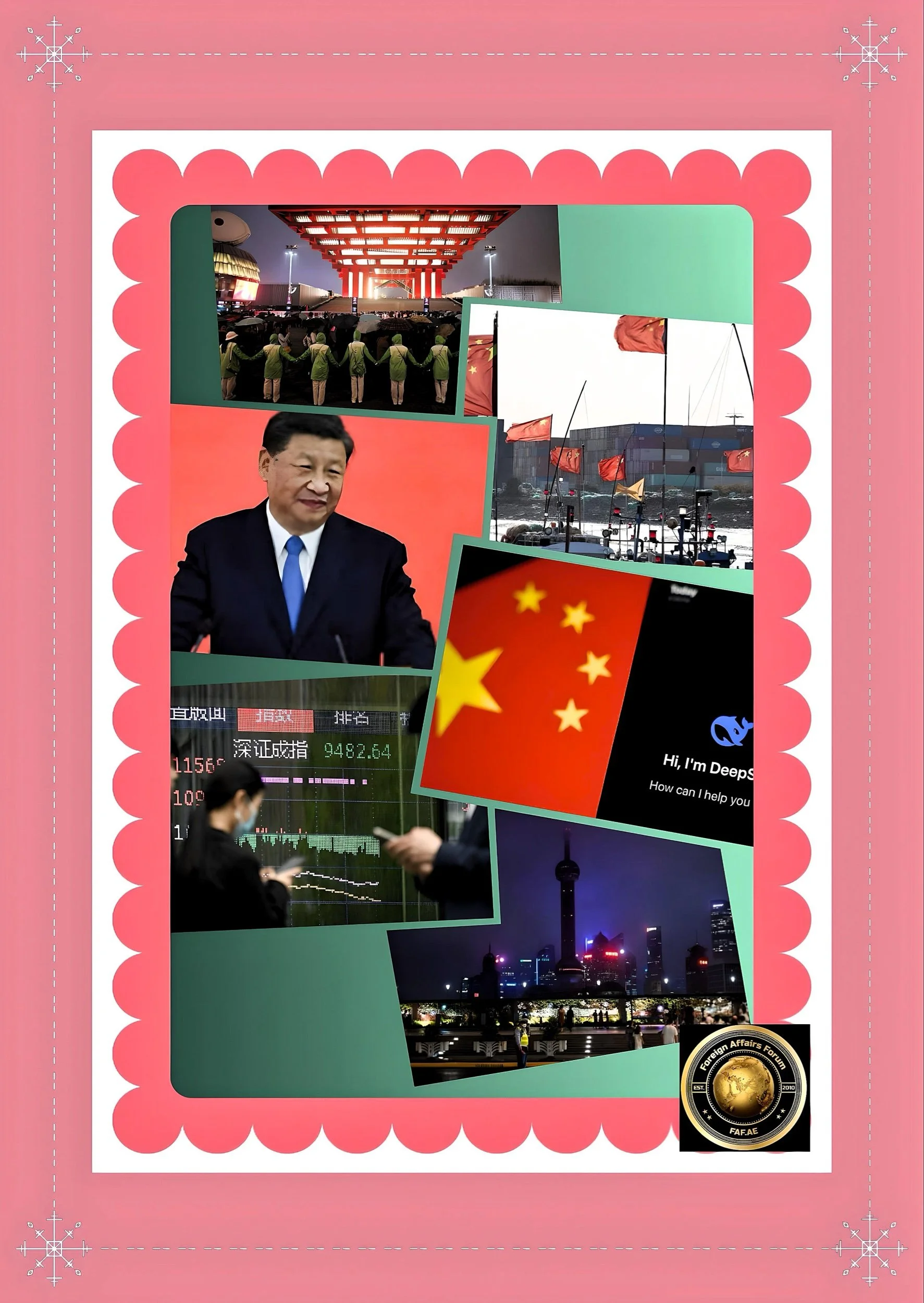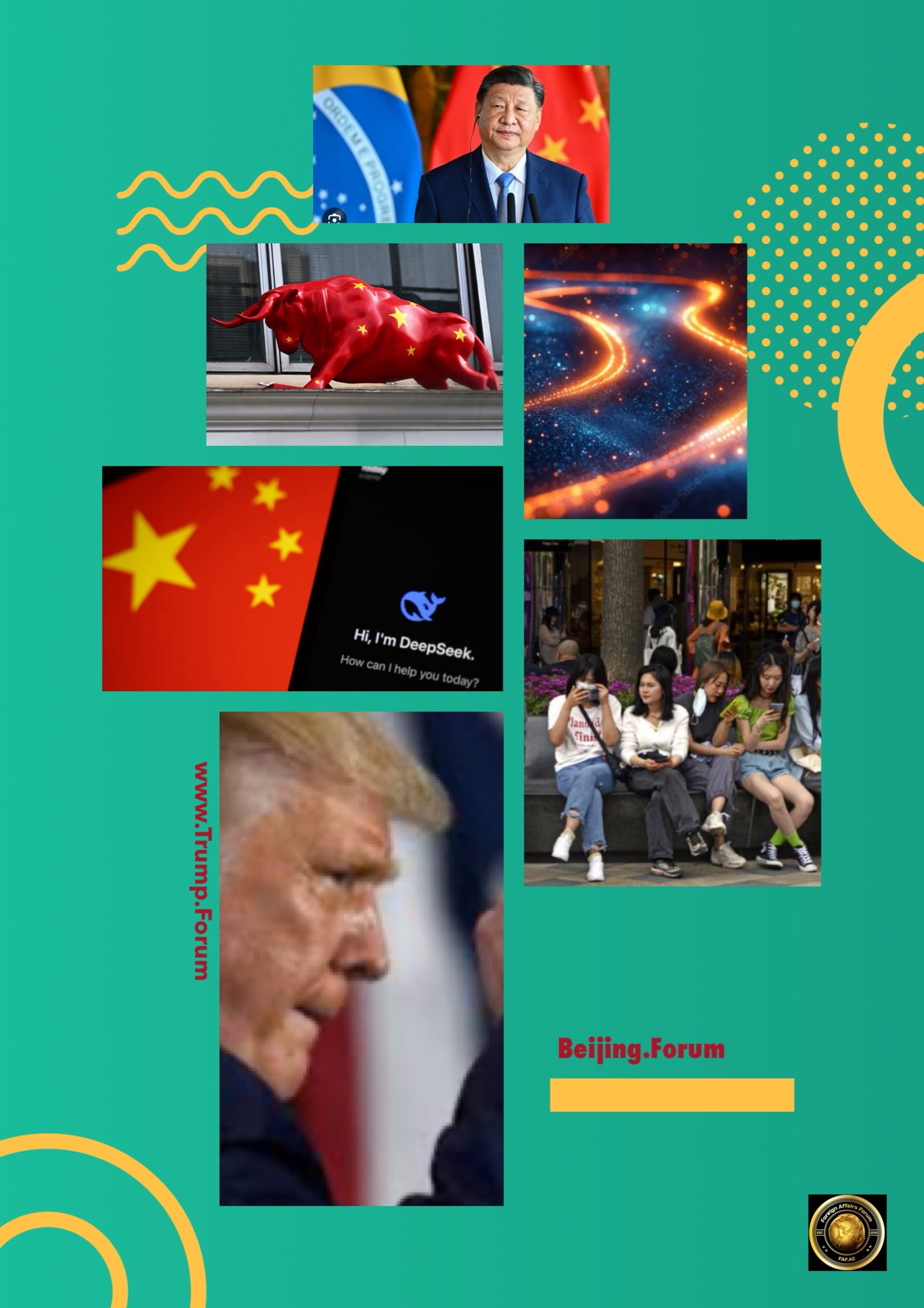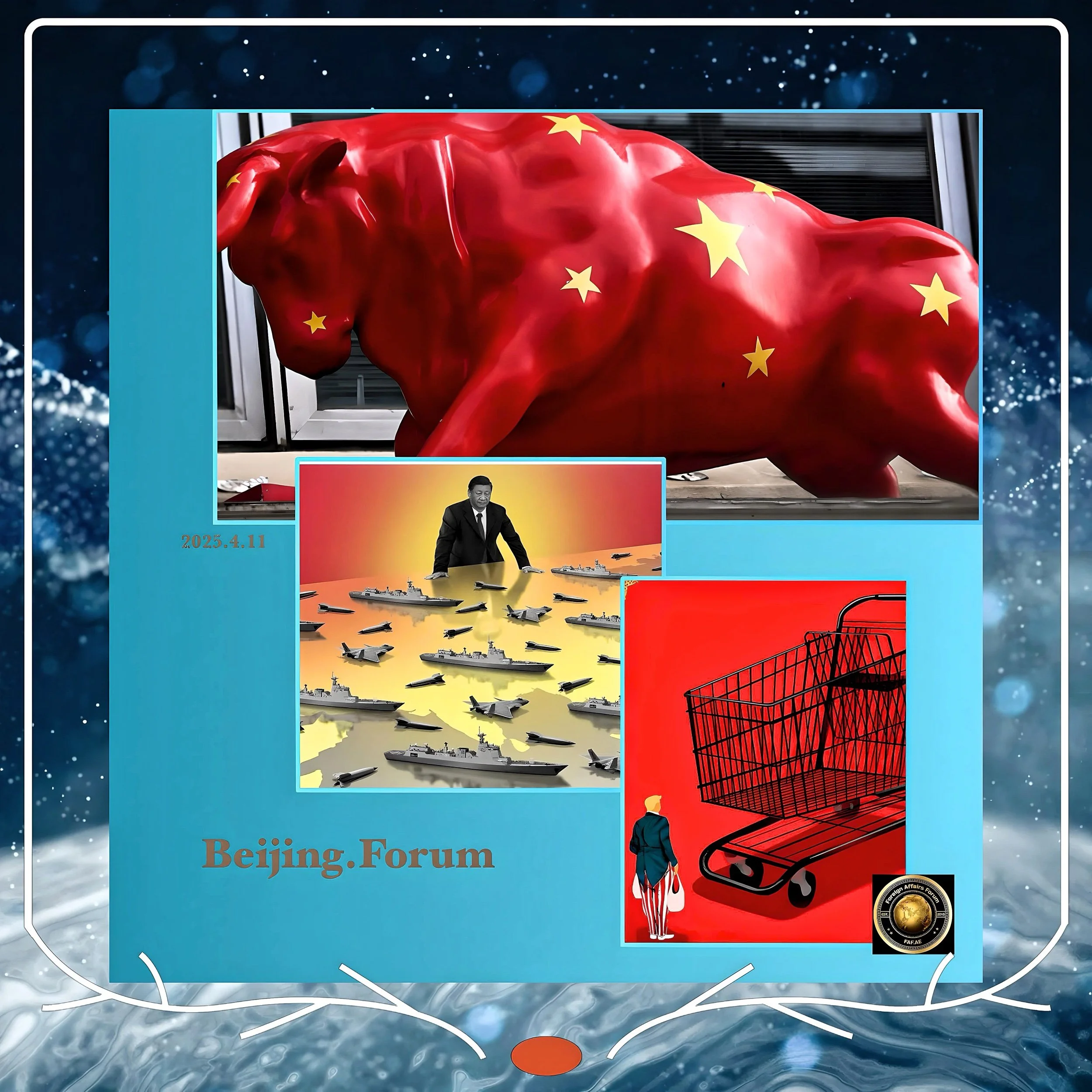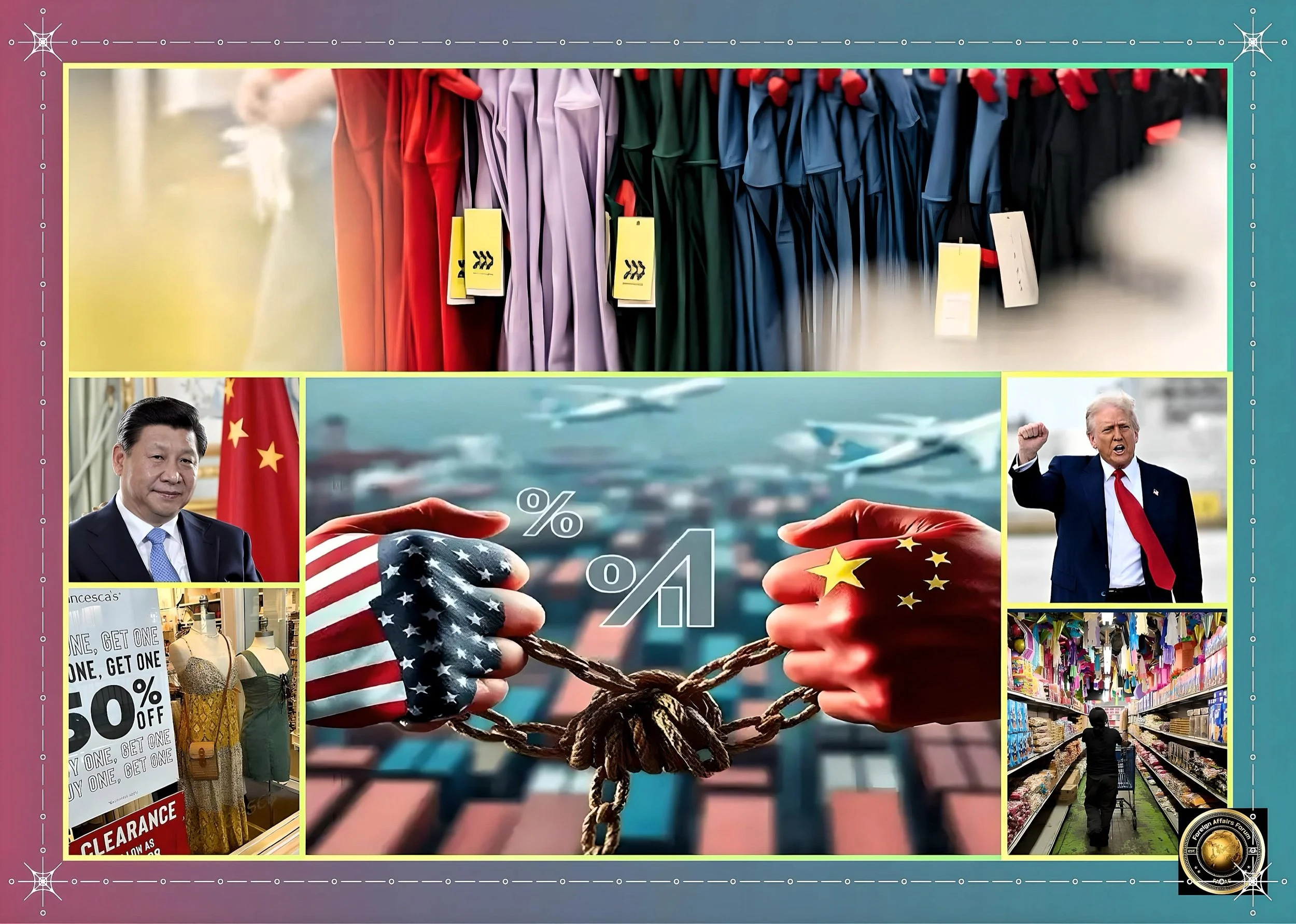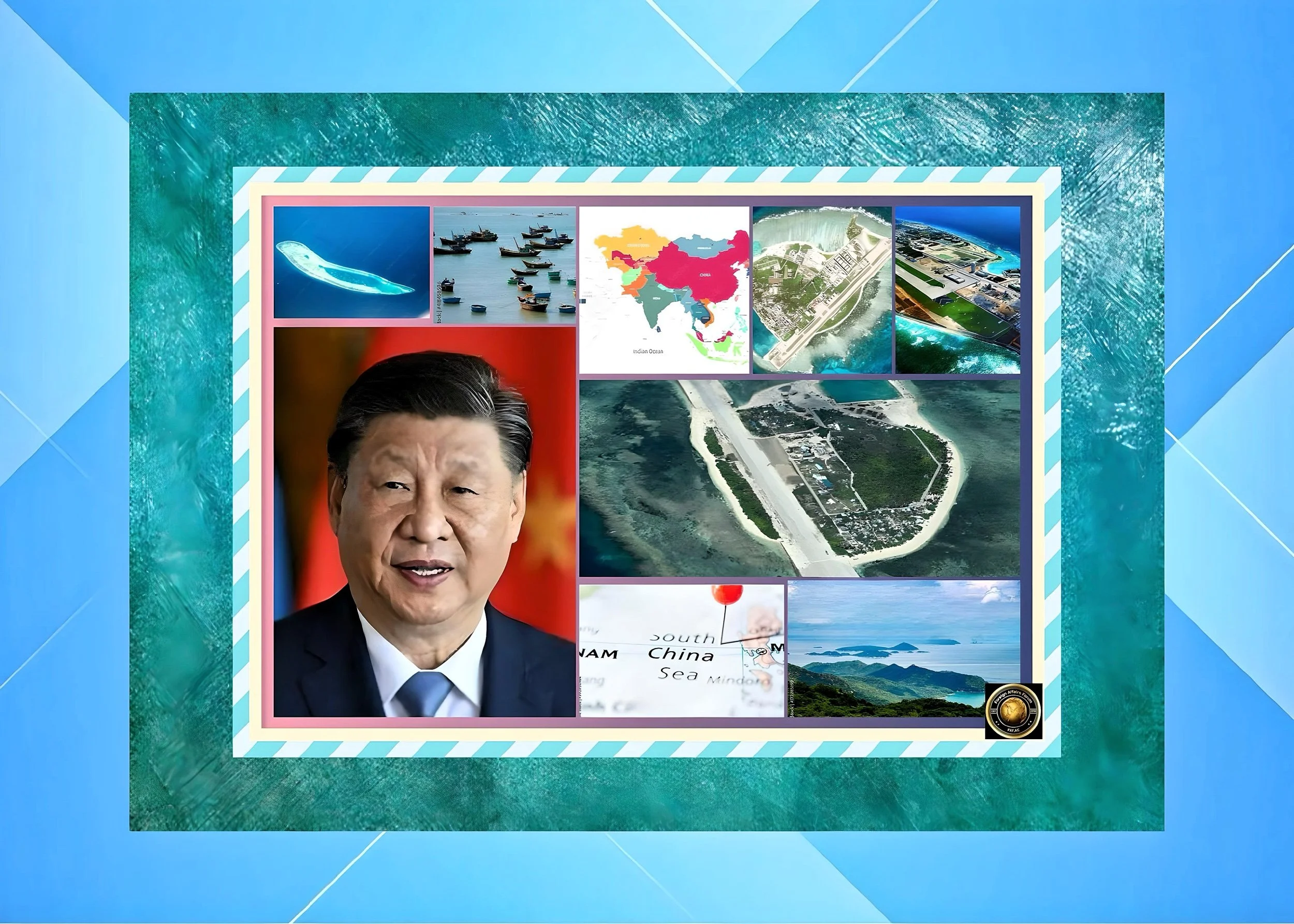Anticipating Change: The Future of China and Global Dynamics
Introduction
As China’s history reveals, predicting its future has always been a perilous exercise fraught with uncertainty. Beijing's trajectory—both as China’s capital and as a microcosm of the nation’s evolution—embodies this unpredictable dynamism.
Today’s China stands at multiple crossroads: economically facing structural challenges, politically navigating centralized control, urbanistically balancing modernization with heritage, and geopolitically recalibrating its global ambitions.
FAF comprehensive analysis examines how change might unfold in Beijing and greater China through the mid-21st century, recognizing that the only certainty may be surprise.
Beijing’s Urban Metamorphosis
Beijing’s physical landscape has transformed dramatically throughout its 3,000-year history, serving as the capital of numerous dynasties and political entities. Today, this ancient city is caught between preserving its historical character and embracing hypermodernization.
Traditional hutongs—winding, walled neighborhood streets that once defined Beijing’s character—are being demolished at an alarming rate to make way for gleaming high-rises.
This physical transformation symbolizes China’s struggle between honoring tradition and pursuing rapid development.
Looking toward 2030, Beijing faces competing futures. Recent research examining land cover changes projects significant urban expansion under different scenarios.
Under a “natural growth” scenario, Beijing’s urban land will continue expanding while agricultural land diminishes.
Alternatively, an “ecological priority” scenario could improve habitat quality and environmental conditions through controlled development and ecosystem conservation.
The dramatic urban expansions of recent decades—construction land increased by 1,316.47 km² between 2000 and 2020, a growth rate of 58.60%—may slow as ecological priorities gain prominence.
The transformation extends beyond physical structures to consumer culture. Post-pandemic Beijing has seen an explosion of artisanal coffee shops, symbolizing increasingly sophisticated tastes among urban residents.
One observer noted that Beijing has become “more middle-class and a commercial center with a strong consumer culture,” with cafes offering innovative flavors that blend Western coffee traditions with Chinese elements like osmanthus and jasmine.
This evolution in consumer preferences reflects the growing Westernization of urban Chinese lifestyles while incorporating distinctly Chinese characteristics.
The dual Olympic legacy (2008 Summer Games and 2022 Winter Games) has further accelerated Beijing’s urban transformation.
However, the anticipated political liberalization following the 2008 Olympics never materialized. Instead, as one journalist observed, “After the Beijing Olympics, Chinese authorities changed their tone completely.
They said they did not need to learn from the West anymore”. This reversal of expectations highlights how easily predictions about China’s future can miss the mark.
Economic Recalibration and Innovation
Beijing’s economic future is inextricably linked to China’s broader economic trajectory, which appears to be entering a new phase. Multiple analyses suggest China’s economy may have already peaked as a proportion of the global economy in 2021.
The country faces a structural economic slowdown driven by property sector collapse, local government debt challenges, and diminishing returns on massive infrastructure investments.
Official statistics claim GDP growth of nearly 5%, but independent estimates suggest actual growth in 2024 was likely between 2.4% and 2.8%.
This discrepancy illustrates what analysts describe as “authority bias” in China’s economic narrative—the disconnect between official reporting and policy actions that suggest far more serious concerns.
Beijing must maintain sufficient growth while transitioning from an export- and investment-driven model to one balanced by stronger domestic consumption.
Consumer habits in Beijing are already shifting, as demonstrated by the transformation from traditional “wet” markets to supermarkets and convenience stores.
The rise of unicorn enterprises like the Manner coffee chain, valued at around US$2.8 billion, exemplifies the changing consumer landscape.
However, these consumption patterns primarily benefit urban areas like Beijing, while the rural-urban divide remains a significant challenge for China’s development.
China’s long-term goal to become a fully developed country by 2049 (the centenary of the People’s Republic) faces multiple headwinds.
Beyond economic challenges, China has an underdeveloped financial system, insufficient innovation capacity, and an aging population that will significantly impact economic productivity.
By 2049, China’s elderly population is expected to more than double to 400 million people, with the “old-old” (85+) reaching 150 million.
These demographic pressures will necessitate substantial reforms to China’s social security system, healthcare delivery, and workforce policies.
Political Evolution and Control
The future of governance in Beijing reveals tensions between centralization and adaptation. Under President Xi Jinping, China has witnessed increasing political centralization rather than the economic-led political liberalization many observers once expected.
The iconography and rhetoric emerging from Beijing increasingly resemble earlier eras of personalized rule—“a Red Emperor, a cult of personality, the leader’s ‘thought’ constitutionally enshrined, centralized power, suppression of dissent.”
Xi’s centralized power structure creates both strengths and vulnerabilities. While centralization enables decisive action on priorities like technological advancement and environmental protection, it can simultaneously hinder governance adaptability and foster new factional rivalries.
Recent years have seen “continuous political purges” and “widening social discontent,” particularly among urban middle classes who have experienced economic uncertainty alongside tightening political control.
Looking ahead, Beijing must contend with “bureaucratic inertia, social ennui, and political distrust” that percolate beneath the surface of apparent stability.
The traditional social contract—economic growth in exchange for political acquiescence—faces strain as growth moderates.
Maintaining stability while addressing complex governance challenges will require Beijing to continue improving living standards or offer a compelling alternative narrative.
Beijing may experiment with “controlled participation” in the future, allowing citizens greater input on local issues while maintaining central authority on broader policy directions.
However, the possibility of unexpected political developments cannot be discounted, particularly if economic challenges intensify or external crises emerge.
Geopolitical Repositioning
Beijing’s approach to international relations is undergoing significant recalibration. The Belt and Road Initiative (BRI), once the centerpiece of China’s global ambitions, “has become a financial disaster,” according to some observers.
Initially presented as “bigger and more generous than America’s Marshall Plan,” the BRI has been scaled back to focus on “smaller and less costly sectors such as energy and technology.”
This recalibration reflects China’s domestic economic constraints and the mixed reception from partner countries.
The US-China relationship remains the most consequential bilateral dynamic shaping Beijing’s future. While competition and tension will likely persist, there are pathways toward what analysts describe as a “stable modus vivendi” in the 2030s.
This scenario would involve a core geopolitical bargain: “The United States accepts China’s continued growth and development but works to balance its regional hegemony and receives reassurance from Beijing that it can be content without global preeminence.”
Such an arrangement would allow both powers to compete economically while avoiding intentional damage to each other’s core interests.
However, reheating this equilibrium requires addressing deep mistrust and would necessitate both sides to accept limits on their ambitions.
Whether leaders in Beijing and Washington possess the political will to pursue such constraints remains uncertain.
Territorial issues will continue to challenge Beijing’s diplomatic approach. The historical territorial expansions during the Qing dynasty—incorporating Manchuria, Taiwan, Tibet, and Xinjiang—remain sources of tension for contemporary China.
Taiwan, in particular, represents both a core sovereignty claim for Beijing and a potential flashpoint in US-China relations. How Beijing navigates these territorial sensitivities will significantly influence its regional relationships and global standing.
Emerging Technologies and Climate Adaptation
Its approach to transformative technologies and environmental challenges will shape Beijing's future.
The Chinese government has launched a “whole-of-government effort to advance cutting-edge technologies,” positioning innovation as central to overcoming economic headwinds.
However, technology competition with the United States and Europe creates countervailing pressures, with increasing restrictions on advanced semiconductor access and other critical technologies.
Climate change presents both challenges and opportunities for Beijing’s development. The “ecological priority” scenario for Beijing’s future growth would involve controlled urban expansion, effective environmental conservation policies, and systematic ecological restoration.
Such approaches could simultaneously address environmental degradation while creating new economic sectors focused on green technology and sustainable development.
Conclusion
The Certainty of Surprise
If history is any guide, the most likely scenario for Beijing’s future is one we haven’t yet imagined. As the query noted, predictions about China’s trajectory have consistently failed to capture the dramatic shifts that materialized.
In 1900, no one predicted the fall of the Qing dynasty and the subsequent warlord period. In 1940, few imagined China would become a communist state, breaking with the Soviet Union by 1960query.
Today’s Beijing presents seemingly contradictory signals—simultaneously embracing global capitalism while reinforcing party control, tackling environmental challenges while pursuing economic growth, and participating in international institutions while challenging aspects of the Western-led order.
These tensions create multiple potential futures, which could be dramatically altered by “black swan” events like technological breakthroughs, leadership transitions, environmental crises, or geopolitical conflicts.
What remains certain is that Beijing will continue to reflect the broader tensions and transformations of Chinese society—balancing tradition and innovation, control and adaptation, ambition and constraint.
One observer noted, “China holds a millennium of history and a constant pull toward the future at every turn.” It is precisely this dynamic interplay between past and future that makes Beijing’s evolution so unpredictable and so fascinating.
The city that has reinvented itself dozens of times throughout its 3,000-year history will undoubtedly reinvent itself in ways we cannot fully anticipate. The once and future China may well surprise us all.

